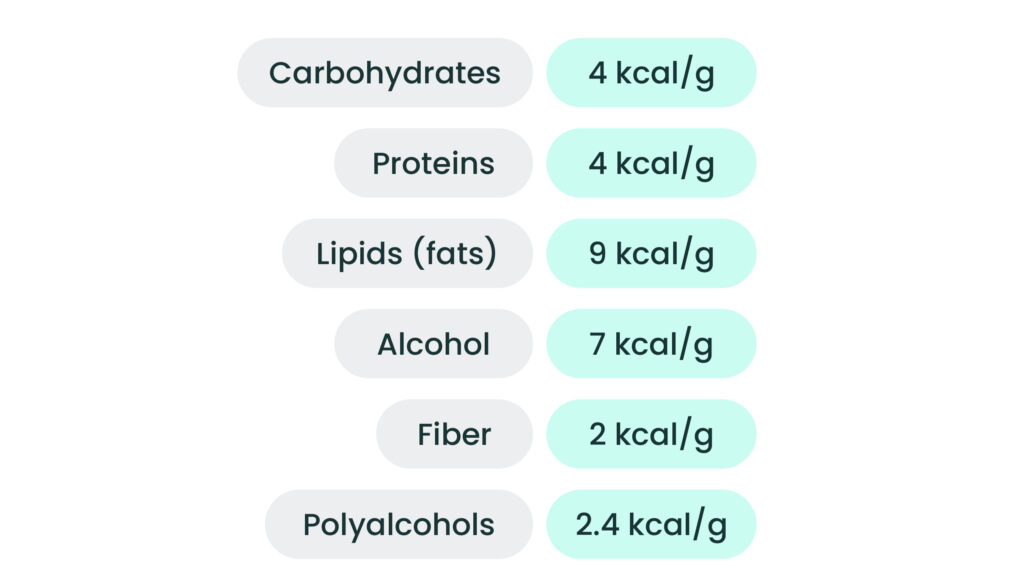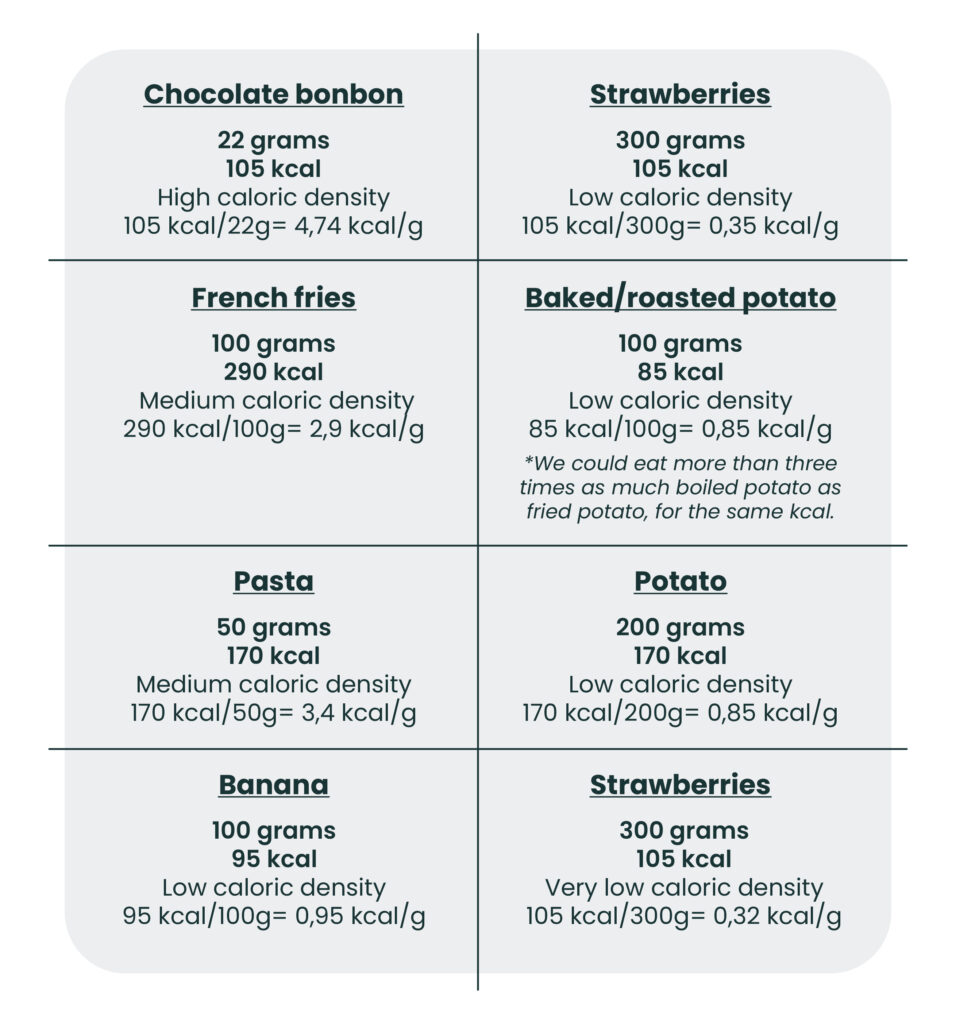The caloric density of a food is the amount of energy it contains per unit of weight and volume (kcal/g). That is, it measures the amount of energy a food provides in relation to its size or weight.
When we eat, we provide nutrients to our body and our cells metabolize them into energy. Carbohydrates, fats or lipids, and proteins are the macronutrients that we can ingest in our bodies for energy purposes.
HOW TO KNOW THE CALORIC DENSITY OF A FOOD?
To determine the energy or caloric density of foods, specific conversion factors are used for each nutrient:

Therefore, the energy provided by food depends on its content of carbohydrates, proteins, lipids, alcohol, fiber, and polyols. It should be noted that lipids and alcohol provide more energy than the rest of the nutrients. Therefore, the same amount, the more Kcal.
HOW USEFUL IS IT?
We are talking about a nutritional quality index that can be useful in choosing our food, as it will allow us to prioritize if we are interested in foods with more volume to fill us more, in addition to nourishing us. And when can we be interested in this concept? When we need to lose weight to improve our quality of life.
If we take this into account, we can choose foods that, as we eat them and our stomach fills up, activate a series of receptors that will send signals to our brain to inform it that we no longer need to eat more.
This information that our brain processes give us the sensation of fullness. When a food has a low caloric density it makes our stomach feel satisfied with a lower amount of calories.
ENERGY DENSITY

The energy density of a food or diet depends not only on its macronutrient content but also on its water content. Those with high water content have a low caloric density and those with high fiber also reduce the energy density of the diet.
Here are examples comparing the caloric density of various foods that provide the same amount of energy, but are different in terms of volume and satiety.

According to the British Nutrition Foundation (BNF), foods can be classified according to this parameter as follows:
- Foods with very low energy density: ˂0,6 kcal/g
- Low energy density foods: 0,6—1,5 kcal/g
- Foods of medium energy density: 1,5—4 kcal/g
- High energy density foods: >4 kcal/g
For the same Kcal, you can eat more or less of one or the other, depending on your objective: maintenance, weight loss, or muscle gain.
The growing interest shown in recent years by consumers in controlling their energy intake has led a large number of companies in the food sector to design foods with lower caloric density.
This is not possible in natural foods, so it actually applies to processed food products. To reduce energy intake in the case of natural foods, it is advisable to avoid frying them. It is better to choose to cook them in the oven, grill, papillote, and with good quality oil.
IT IS IMPORTANT TO KNOW THAT…
Energy intake varies significantly among individuals due to factors such as age, level of physical activity, metabolism, and other individual factors. Therefore, the number of calories one person needs to maintain a healthy weight may be very different from that of another person.
In addition, focusing solely on measuring food can lead to a restrictive diet mentality and an unhealthy relationship with food. Instead of focusing on the number of calories, it is important to pay attention to the nutritional quality of foods, eat a variety of healthy and balanced foods, and listen to the body’s signals of hunger and satiety.